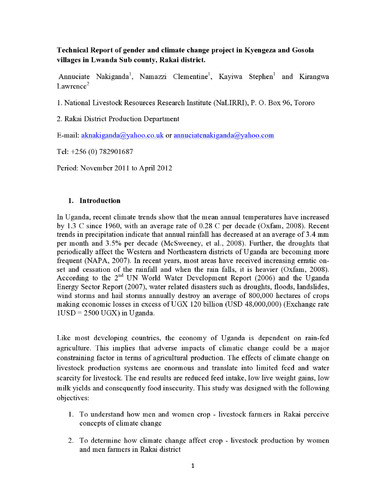Technical Report of gender and climate change project in Kyengeza and Gosola villages in Lwanda Sub county, Rakai district
Abstract
In Uganda, recent climate trends show that the mean annual temperatures have increased by 1.3 C since 1960, with an average rate of 0.28 C per decade (Oxfam, 2008). Recent trends in precipitation indicate that annual rainfall has decreased at an average of 3.4 mm per month and 3.5% per decade (McSweeney, et al., 2008). Further, the droughts that periodically affect the Western and Northeastern districts of Uganda are becoming more frequent (NAPA, 2007). In recent years, most areas have received increasing erratic onset and cessation of the rainfall and when the rain falls, it is heavier (Oxfam, 2008). According to the 2nd UN World Water Development Report (2006) and the Uganda Energy Sector Report (2007), water related disasters such as droughts, floods, landslides, wind storms and hail storms annually destroy an average of 800,000 hectares of crops making economic losses in excess of UGX 120 billion (USD 48,000,000) (Exchange rate 1USD = 2500 UGX) in Uganda.

